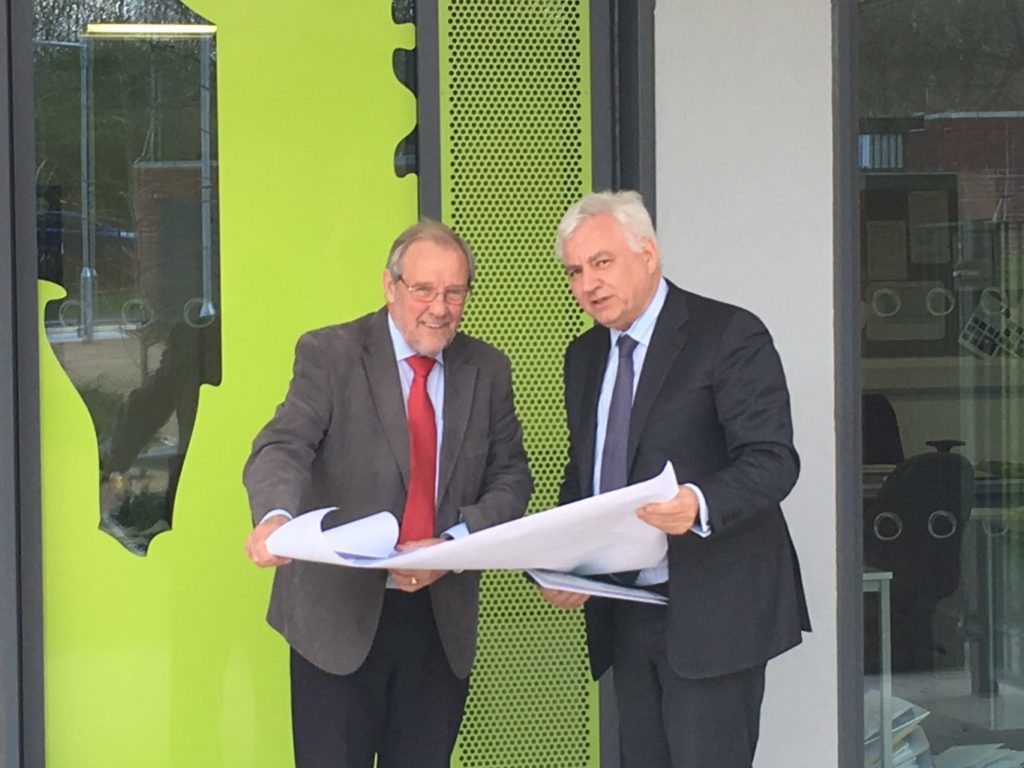Fifteen years ago a vision of advanced manufacturing was born on the former Orgreave Colliery site, just off the M1 in South Yorkshire.
The Advanced Manufacturing Research Centre – the AMRC – was a move on many levels to unite research and industry. In so doing it brought about a sea change in attitudes to engineering and manufacturing.
And now a second vision is emerging in the Sheffield City Region, once again bringing together academia and industry – this time to revolutionise approaches to health and wellbeing by capturing the passion that inspired the London 2012 Olympics. The vision of the Olympic Legacy Park is being rapidly realised as buildings appear and landscapes are laid out. Like the AMRC, the Olympic Legacy Park brings new life to an area where there was once traditional heavy industry – in this case the sprawling works of Brown Bayley Steels.
And the link with the AMRC is reinforced by the Advanced Manufacturing Innovation District which stretches across the two centres of excellence.
Dubbed a ‘living lab’, the Park is creating synergy between active sport, health studies, and wellbeing research. At its heart it will be the Sheffield Hallam University ‘Advanced Wellbeing Research Centre’, the most advanced research and development centre for physical activity in the world hosting 50 research academics and PhD students.
Talented engineers and researchers will create innovations that help people move, designing new products and services from initial concept all the way through to market, which help tackle the key issues of static levels of physical activity and rising obesity.
Companies, including global technology leader Toshiba and leading health insurer Westfield Health, are already investing in collaborative research and innovations. Toshiba has signed a deal to provide cutting-edge equipment for the Advanced Wellbeing Research Centre. Offices for like-minded organisations and a hotel for elite athletes using the English Institute of Sport, will also form part of the Olympic Legacy Park.
Born from a partnership of the public and private sectors, the Olympic Legacy Park sits prominently between the large local populations of Darnall and Attercliffe in Sheffield, and the thousands who use the nearby artery roads. It will provide opportunities for participating in sport for research into health and wellbeing and the technologies that can support it.
It will use the local population, children in the Oasis Academy primary school already on site, in its research and testing. Added to that will be 600 pupils at the second Sheffield University Technical College due to open in October, where the students will specialise in human sciences and computing. A multi-purpose, 3,000 seat indoor community arena will be home to the Sheffield Sharks semi-professional basketball squad. There will be a 3G artificial pitch for the Sheffield Eagles rugby club and the local community with a 2,500 seat stand.
The two first private sector investment partners, Toshiba and Westfield Health, are working closely with Sheffield Hallam University and Legacy Park Ltd to get the Olympic Legacy Park up and running. Project Director David Hobson says it’s a model similar to the partnership that has made the region’s Advanced Manufacturing Research Centre such a success.
“But what makes us different,” he says, “is that we are about people. We are so proud to have local Olympic champions – Jessica Ennis Hill and Nicola Adams training in the English Institute of Sport Sheffield. Together with Sheffield Sharks and Sheffield Eagles, this will give the opportunity for the local community to exercise alongside these inspirational sports people.
“And we’re looking at large numbers coming on site to enjoy watching sport in the evenings and weekends: the Community Stadium having a capacity of 5,000 for Sheffield Eagles matches, and the Sheffield Sharks up to 3,000.”
A new study by Sheffield Hallam University adds weight to the belief that taking part in sport in England has both an economic and social value. The research by the university’s Sports Industry Research Centre found that in 2013/14 £23billion was spent on participating in sport in England – and it produced benefits totalling £45billion.
They included reduced health risks and a drop in crime, and with £30 billion attributed to ‘improved life satisfaction’. The report is at www.shu.ac.uk/research/sirc/news/social-return-investment-sport.
I recently had a hugely exciting visit to the Park to see how quickly it is taking shape. As the biggest of its kind in Europe, this project is an inspiring example of what can be achieved in our region. It will play a central role in the growth and development of this area.
